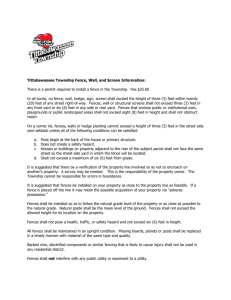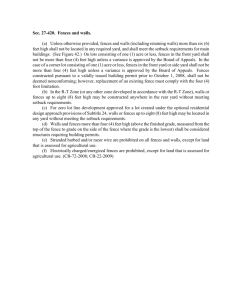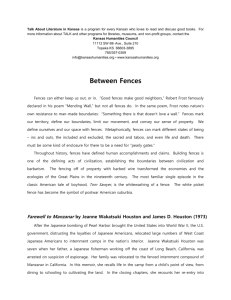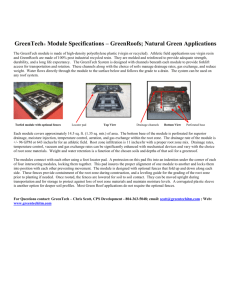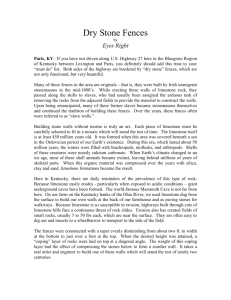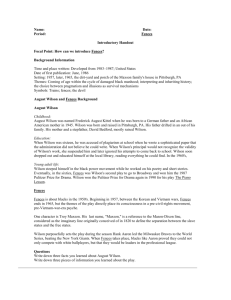Fences (1985) by August Wilson: An Exploration of Fences, Past
advertisement
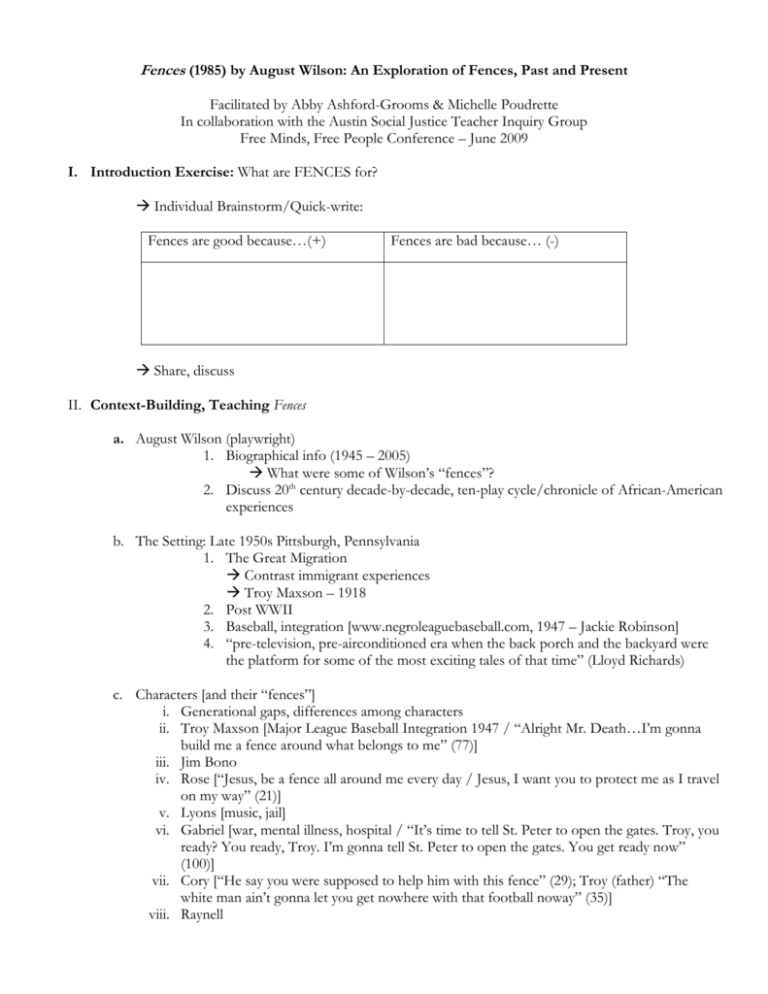
Fences (1985) by August Wilson: An Exploration of Fences, Past and Present Facilitated by Abby Ashford-Grooms & Michelle Poudrette In collaboration with the Austin Social Justice Teacher Inquiry Group Free Minds, Free People Conference – June 2009 I. Introduction Exercise: What are FENCES for? Individual Brainstorm/Quick-write: Fences are good because…(+) Fences are bad because… (-) Share, discuss II. Context-Building, Teaching Fences a. August Wilson (playwright) 1. Biographical info (1945 – 2005) What were some of Wilson’s “fences”? 2. Discuss 20th century decade-by-decade, ten-play cycle/chronicle of African-American experiences b. The Setting: Late 1950s Pittsburgh, Pennsylvania 1. The Great Migration Contrast immigrant experiences Troy Maxson – 1918 2. Post WWII 3. Baseball, integration [www.negroleaguebaseball.com, 1947 – Jackie Robinson] 4. “pre-television, pre-airconditioned era when the back porch and the backyard were the platform for some of the most exciting tales of that time” (Lloyd Richards) c. Characters [and their “fences”] i. Generational gaps, differences among characters ii. Troy Maxson [Major League Baseball Integration 1947 / “Alright Mr. Death…I’m gonna build me a fence around what belongs to me” (77)] iii. Jim Bono iv. Rose [“Jesus, be a fence all around me every day / Jesus, I want you to protect me as I travel on my way” (21)] v. Lyons [music, jail] vi. Gabriel [war, mental illness, hospital / “It’s time to tell St. Peter to open the gates. Troy, you ready? You ready, Troy. I’m gonna tell St. Peter to open the gates. You get ready now” (100)] vii. Cory [“He say you were supposed to help him with this fence” (29); Troy (father) “The white man ain’t gonna let you get nowhere with that football noway” (35)] viii. Raynell III. Fences as Borderlands a. How do fences protect? How do fences prevent or prohibit? b. How do fences empower through ownership? c. How do fences oppress through prohibition? d. What cultural/political/social messages do fences convey? e. Can fences be invisible? f. How do we erect and enact our own fences? g. How does the past/history provide fences in our lives? h. How are cultural/language groups affected differently by fences? Do different groups have different fences? i. Can someone have access to “both sides of the fence”? How? j. What are your fences? k. What fences exist for students in your classroom? In Austin? In Texas? In the U.S.? In the world? l. _____________________________________________________________________________? m. _____________________________________________________________________________? n. _____________________________________________________________________________? IV. Sensitive language and diverse classrooms a. How might “dialect” be challenging for some student-readers? How might “dialect” be empowering for some students? b. Why is it important to expose children to literature that reflects different ways of talking and knowing? c. Is the n-word profanity? Should it be “allowed” at school? d. Who can say the n-word and who can’t? e. The N-word: Fences vs. Huck Finn? f. _____________________________________________________________________________? g. _____________________________________________________________________________? h. _____________________________________________________________________________? V. Final Thoughts/Questions/Discussion
